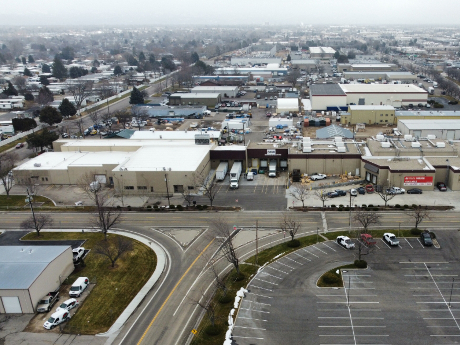— By Devin Pierce, industrial specialist, TOK Commercial in Boise —
In recent years, Boise’s industrial market has become a focal point for investors and developers drawn to the region’s economic growth and location. With demand for industrial space on the rise, the market has experienced an unprecedented wave of new construction aimed at meeting the needs of both local businesses and national tenants looking to expand their operations.
This surge in development activity reflects Boise’s growing prominence as a logistics and manufacturing hub. However, as new projects come online, the market is also grappling with the challenges of balancing supply and demand, particularly in the wake of fluctuating economic conditions.
Speculative Construction Drives Vacancy Surge
Boise’s industrial market saw a considerable number of projects completed during the first half of 2024, with more than 2.2 million square feet of new construction delivered. Speculative construction accounted for more than 86 percent of these projects, totaling nearly 2 million square feet and marking a record high for mid-year.
Top spec projects included nearly 1 million square feet at Red River Logistics Center; three new buildings (totaling 292,000 square feet) at Park84 in Nampa; and 396,000 square feet at Sky Ranch Logistics. This surplus of new supply has ultimately resulted in vacancy rates reaching historic highs. Multi-tenant vacancy has reached the highest point on record at almost 24 percent, while total vacancy is currently at the highest it’s been since 2013 at 9.1 percent.
Leasing Activity, Absorption Remain Strong
Despite record-high vacancy rates, the industrial market has continued to perform well. The total number of transactions has increased by more than 28 percent compared to this time last year. Net absorption levels are also positive in 77 percent of submarkets.
Canyon County has seen the highest level of absorption so far in 2024, with 378,000 square feet. However, activity has been strong among large industrial users in Ada County, with the Airport submarket currently at almost 183,000 square feet of absorption.
Top deals from the past quarter include Micron Technology leasing 110,000 square feet of new construction at Red River Commerce Center in Boise and Hensel Phelps leasing 86,000 square feet at Kings Road Commerce Center in Nampa. The highest number of deals were recorded in the Caldwell Boulevard submarket, proving that Canyon County continues to be the hub for industrial growth in the Treasure Valley.
The most sought-after spaces are still in the 1,000- to 5,000-square-foot range. Compared to previous years, however, interest in larger industrial space throughout the valley has risen. About a third of the industrial deals over the past 12 months in Boise have been for spaces of more than 7,000 square feet.
New product continues to push overall lease rates up to an average of $1 per square foot (triple net, monthly), with Class A rates reaching as high as $1.33 in some submarkets. However, with extra inventory on hand, lease rates could begin to stabilize as landlords intensify their efforts to attract tenants.
The number of construction projects coming online is also starting to slow and isn’t likely to surpass last year’s total. There is currently 2.6 million square feet of space under construction in the valley. This is compared to more than 4 million square feet in mid-2023. In addition, many planned projects are expected to remain on hold until this new inventory is leased out.
Organic growth is expected to continue to drive leasing activity given that 35 percent of deals within the last year were attributed to tenants opening additional locations or expanding. There is still interest from out-of-area tenants, with 22 percent of deals being new-to-market businesses. While these types of deals have decreased by 21 percent compared to last year, Micron’s $15 billion fabrication facility and significant population growth are anticipated to draw larger industrial users to the Treasure Valley.


